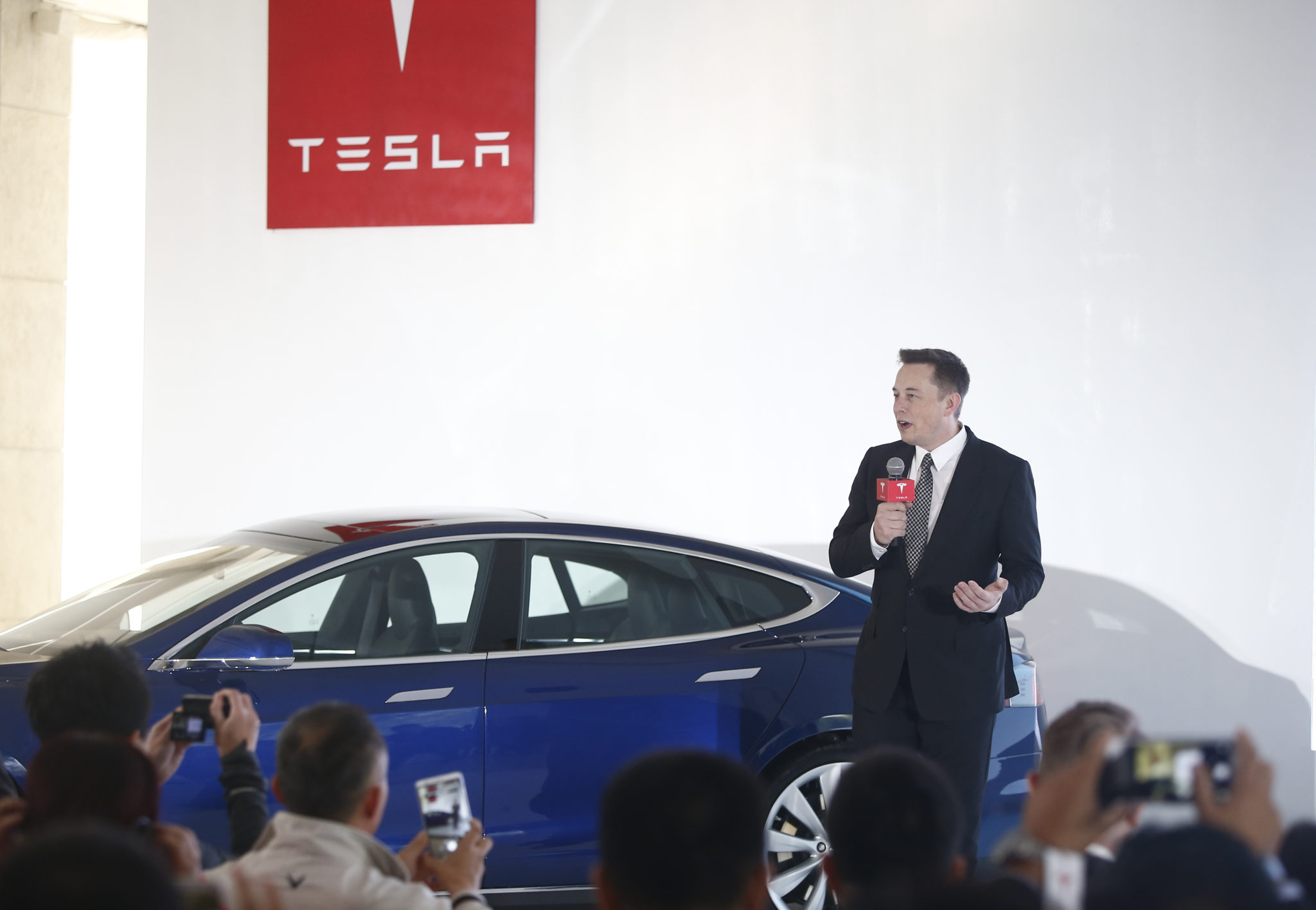Elon Musk rarely shies away from setting bold targets for Tesla, despite a mixed record for achieving them when promised. So it was in character when he announced the electric-car company’s first Chinese Gigafactory could be operational in about 11 months.
“We’re looking forward to hopefully having some initial production of the Model 3 towards the end of this year and achieving volume production next year,” Musk said at the Shanghai groundbreaking January 7.
He may be disappointed.
There’s no precedent for building a large, modern auto-assembly plant and starting its production in under a year, manufacturing experts say. In fact, even Tesla’s official goal of ramping up to 3,000 Model 3 electric sedans per week at some point in 2020 won’t be easy.
“Unless he’s mastered some approach that I’m not aware of to do everything in a more effective and efficient way, that lead time to build is going to be really challenging,” said Laurie Harbour, CEO of manufacturing consultant Harbour Results Inc. in Southfield, Michigan. “It definitely seems completely optimistic.”
Loading...
Musk’s motivation to rapidly localize Tesla’s operations in China is as simple as legendary criminal Willie Sutton’s apocryphal maxim about banks: That’s where the money is. China is the world’s largest electric-vehicle market, where sales of rechargeable vehicles likely reached about 1 million units in 2018. That’s why Tesla’s capacity target for its Shanghai Gigafactory when fully ramped up is 500,000 vehicles annually.
Tesla begins delivering Model 3s to China in March, but its China sales are restrained by a 40% import duty on foreign-built autos (China last month moved to cut that to 15%). Along with the Model 3, the Shanghai plant is also to eventually produce Model Y electric crossovers that can be sold to Chinese customers with no added tariff.
But first Tesla has to build that plant.
It typically takes at least two years to get a large new auto factory ready to churn out vehicles, according to Brian Jones, COO of Lexington, Kentucky-based Gray, an engineering firm that’s built nearly 450 auto and parts plants in North America over the past five decades for companies including Toyota, Volkswagen, General Motors, Mercedes-Benz, Nissan and Volvo.
“From the first shovel in the ground to the first vehicle rolling off an assembly line, the fastest we’ve ever seen is 24 months, which is typically a project you see from one of the more mature, experienced manufacturers,” Jones says. “That schedule can go all the way up to 36 months.”
That includes building the factory structure itself, as well as infrastructure in and around the site, including utilities, roads and exit ramps in place.
Tesla secured the 210-acre site in Shanghai’s Lingang area last year for about $140 million, and Musk said the cost of the initial phase to get the facility up to 250,000 units of annual capacity would be about $2 billion. (Analysts estimate that getting the plant to Tesla’s half-million-unit capacity goal may total $5 billion.) The local Shanghai government is helping expedite the project in terms of permits and supporting infrastructure, and Tesla says lessons learned from Model 3 production at its Fremont, California, plant mean it can accelerate Chinese Gigafactory construction.
Still, Musk’s comments were at odds with those he made in a July statement issued by the Shanghai Municipal Government about the plant’s timetable. Once permits and other preparations were set, “it will take roughly two years until we start producing vehicles and then another two to three years before the factory is fully ramped up to produce around 500,000 vehicles per year for Chinese customers,” he said.
By October 2018, however, he’d begun describing the accelerated timetable. “We’re driving to have Model 3 production for the China market or the Greater China market active certainly next year. It will be happening next year,” he told analysts during Tesla’s third-quarter results call.
“Things work differently in China, so the North American experience (for building a new plant) may not translate exactly there,” said Kristin Dziczek, who studies industry, labor and economics as a vice president at the Center for Automotive Research in Ann Arbor, Michigan. Local government assistance will certainly help, “but this does seem really, really aggressive,” she said.

Reproducing the design and robots used for the Model 3 assembly line in California will speed things up, according to consultant Harbour.
Tesla also has to certify new suppliers in China, which is very time-consuming. Auto-assembly plants are “such a big system, and it’s such a gamble from launch of construction to starting to build (vehicles). Everything has to fall in line as planned in order for it to execute in that kind of timing. And to do it in 11 months, every star in the universe has to align for that to happen,” Harbour said.
Gray hasn’t built any of Tesla’s facilities nor has it built plants in China, but it is exploring consulting opportunities there, Jones said.
So could one of the top auto plant builders in the U.S. get a “greenfield” production site ready in under 12 months?
“We love a challenge, but that would be a stretch,” Jones said.

Loading...
